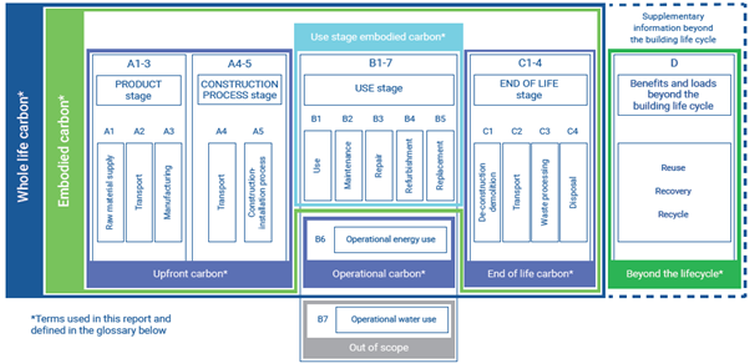Construction still has a long way to go on sustainability but clients can make significant progress by taking a step-by-step approach, argues Peter Egan.

Sustainability is no longer tomorrow’s problem. So how can construction clients take steps to becoming more sustainable?
First of all, it’s important to take a whole carbon approach. Construction needs to understand where it has the largest impact, enabling it to effect the greatest changes.
Fortunately, work on how the industry records the carbon it releases is underway. Organisations such as the IStructE, ICE, RICS, the Green Building Council have been using the RIBA stages as a framework for breaking these elements down into more workable chunks.

The whole life carbon of a project (figure 1) can be broken down into embodied carbon (materials, their manufacture and transport) and operational carbon (in-use energy requirements). From the construction industry’s point of view, embodied carbon is the area it can have the greatest impact on. The operational energy is normally directly related to the design specification and can be addressed within the design stage.
Bringing clients on board
Contractors can play their part by discussing the benefits of more sustainable practices with clients and other industry partners. Many people think that sustainability costs more but if, for example, you can reduce the need for concrete by using a geofabric and compacted aggregates in parking areas, it’s going to reduce costs and allow water percolation.
"If projects can source local sustainable materials, reducing material transport, then the issues in planning are reduced."
Most planning is delayed by either complaints about building works damaging the environment or being a drain on local resources. If projects can address these by sourcing local sustainable materials, reducing material transport, reusing materials, reducing energy demand through solar power, then the issues in planning are reduced.
How can we address high-impact materials?
Cement alone accounts for 8% of the world’s annual CO2 emissions. Removing OPC CEMI and CEMII/A and replacing it with a minimum of CEMII/B would immediately reduce a project’s cement carbon emissions by 15-20%. Timber is another area where quick wins can be made. The industry uses large quantities of C24 grade timber which is not grown in the UK. Specifying timber to UK-sourced C16 would greatly reduce not just the material and transport carbon footprint.
The stepping stone effect
We cannot do this overnight. We need time to understand what materials have the greatest impact. The ICE, IStructE and the Circular Ecology websites all have carbon calculators which can be used to show carbon comparisons, or BS EN 15978:2011 can be used to develop your own process. There are plenty of consultants in this area but investing in a sustainability procurement manager will pay long term gains.
Once the alternatives are understood, organisations can set their own steppingstone approach to reducing their footprints toward 2030 and 2050 goals.
It’s also important to remember the answer to a problem could lie within another specialism. When it comes to areas such as retrofit, the heritage industry is well ahead of many of its counterparts: organisations such as SPAB, STBA and English Heritage (and its Scottish counterparts) have been researching this area of expertise for some time.
Within my own organisation, we are looking to work with the Construction Industry Council’s Climate Action Plan to see how we can improve our business and that of our partners. Let’s see what steps we can take to drive change for the planet and our children.
Peter Egan FCIOB is lead member of the Institution of Royal Engineers’ Sustainability Forum.










